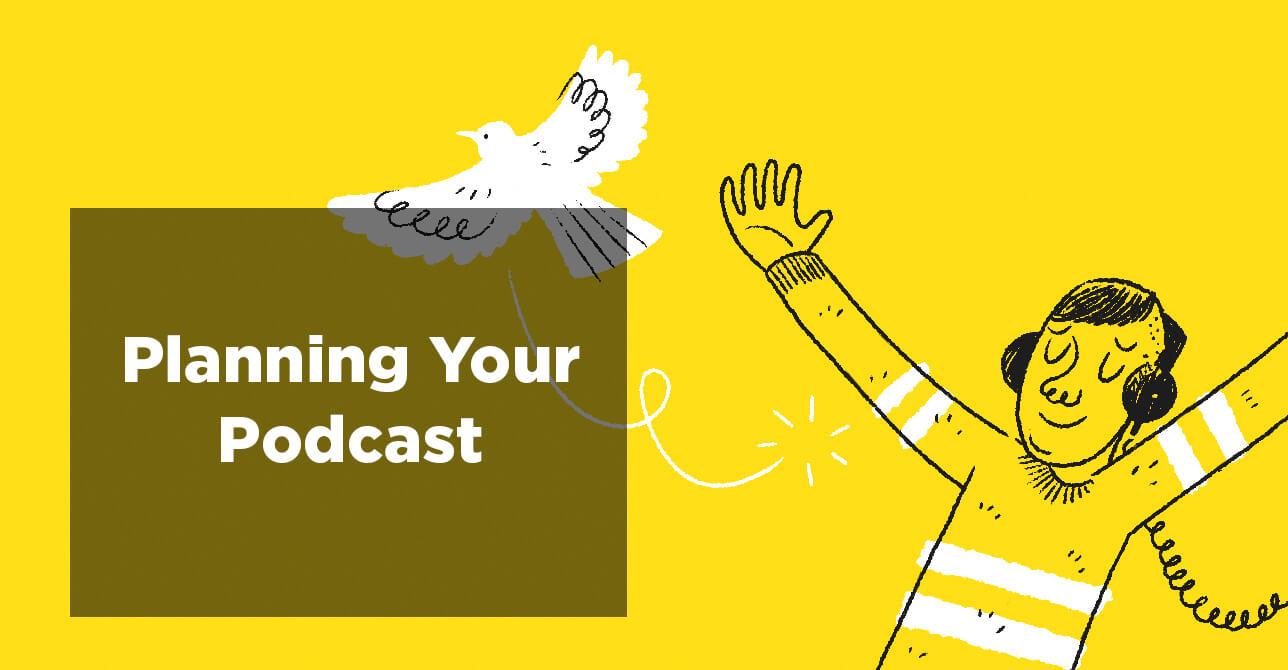How to Start a Podcast in 2023: A Step-by-Step Guide for Beginners
Podcasting is a powerful medium for sharing your voice, message, and passion with the world.

Podcasting is a powerful medium for sharing your voice, message, and passion with the world. Whether you're podcasting for fun, business, or both, this step-by-step guide will help you launch your podcast in 2023.
Step 1: Plan Your Podcast Concept

1,288 × 670
Planning is the foundation of a successful podcast. Here's how to get started:
Choose Your Podcast Topic
Select a topic you're passionate about and that resonates with your target audience. It can be broad, like health or business, or niche, like vegan cooking or movie reviews.
Your podcast topic is the heart of your show. Take time to research and understand the subject matter thoroughly. Identify the key subtopics and themes you'll cover within your chosen niche. This will help you brainstorm episode ideas and keep your content fresh and engaging.
Define Your Audience
Understand your ideal listener's demographics, interests, and online behavior. This knowledge will guide your content. Creating listener personas can be incredibly useful. Dive deep into your potential audience's characteristics. Consider factors like age, gender, location, income, interests, needs, goals, and challenges. This detailed understanding will enable you to tailor your content to resonate with your target demographic.
Pick a Memorable Name
Select a name that reflects your podcast's essence, is easy to remember, and aligns with your content.
Your podcast's name is its first impression. Brainstorm name ideas that encapsulate your topic and brand. Ensure it's unique and not already in use. Think about how it will look as artwork and if it's easily pronounceable. Remember, a catchy and memorable name can significantly impact your podcast's success.
Step 2: Choose Your Podcast Format

Your format defines your podcast's style. Consider these options:
Episode Length
Decide on episode length based on your content and audience. Shorter episodes (15-30 minutes) are easy to produce and consume, while longer ones (45-60 minutes) offer more depth. The length of your episodes should align with your content's nature and your audience's preferences. Shorter episodes are great for quick tips or daily content, while longer formats allow for in-depth discussions and interviews. Choose a length that serves your topic and keeps listeners engaged.
Episode Frequency
Choose a regular release schedule that suits your availability—weekly, biweekly, or monthly. Consistency is key in podcasting. Determine how frequently you can realistically produce episodes while maintaining quality. Weekly releases are popular for building an audience, while monthly can work for more extensive, researched content. Your chosen frequency should align with your content creation capabilities.
Episode Style
Select from these styles: Solo (for sharing expertise), Interview (for guest insights), or Co-hosted (for dynamic conversations). Your episode style impacts the tone and dynamics of your podcast. Solo episodes are ideal for sharing your knowledge and establishing authority. Interviews bring diversity and expert opinions. Co-hosted formats create engaging discussions. Consider what aligns best with your content and your personal strengths as a host.
Step 3: Set Up Your Podcast Equipment

Quality audio is crucial. Ensure you have the right equipment:
Microphone
Invest in an external microphone for clear sound. USB, XLR, or dynamic microphones are good choices. A quality microphone is a non-negotiable for professional-sounding podcasts. Research microphone options within your budget and choose one that complements your recording environment. Ensure it's compatible with your recording setup.
Headphones
Use comfortable, noise-canceling headphones to monitor audio quality. Headphones are essential for monitoring audio while recording and editing. Invest in headphones that are comfortable for extended use. Noise-canceling capabilities help you hear any background noise or audio issues during recording.
Audio Recorder
Consider a dedicated audio recorder for flexibility and features. While software can serve as a recorder, dedicated audio recorders offer greater control and reliability. Research options and choose one that suits your needs. Look for features like multiple inputs, portability, and compatibility with editing software.
Audio Editor
Use podcast-friendly software like Audacity or Adobe Audition for editing. Selecting the right audio editing software can significantly impact your podcast's quality. These programs offer tools for noise reduction, leveling, and adding effects. Invest time in learning your chosen software to maximize its capabilities.
Step 4: Record Your First Episode

Now it's time to record:
Prepare Your Content
Plan your content with a clear introduction, main body, and conclusion. Use a script, bullet points, or a mind map for organization. Content planning ensures your episodes stay on track and deliver value to your audience. Create episode outlines that include key points, anecdotes, and transitions. Having a well-structured plan will make recording smoother.
Set Up Your Equipment
Choose a quiet, interruption-free location, test your equipment, and adjust microphone settings. Recording in a controlled environment minimizes background noise and distractions. Test your equipment before each recording session to identify and address any technical issues. Ensure your microphone settings are optimized for your voice.
Record Your Audio
Speak clearly, confidently, and naturally. Avoid filler words and pauses between sentences for easy editing. Practice your delivery to sound engaging and natural. Minimize filler words like "ums" and "uhs" by pausing instead. Record multiple takes if necessary to ensure the best possible audio quality.
Step 5: Edit Your Audio

Editing improves audio quality and flow:
Import Audio Files
Bring your audio files into your editor and save them as a project. Keep backups of your original files. File organization is essential to prevent loss of your valuable recordings. Save a copy of your raw audio files as backups in case you need to re-edit or re-upload episodes.
Trim Your Audio
Remove silence, noise, mistakes, and irrelevant parts. Effective trimming tightens your episode's pacing and ensures listeners stay engaged. Use your audio editor's tools to eliminate lengthy pauses, background noise, or any content that doesn't add value.
Cut or Rearrange
Create a smooth sequence by cutting or rearranging segments. Editing allows you to craft a cohesive and compelling narrative. Cut out tangents or repetitive sections and arrange content logically. Focus on maintaining a clear and engaging storyline.
Add Transitions or Effects
Enhance your podcast with music, sound effects, or voice-overs. Consider adding music or sound effects at the beginning, end, or during transitions to create a polished and engaging listening experience. Ensure that any audio additions complement your content and don't overwhelm the listener.
Step 6: Publish Your Episode
Make your podcast available online:
Export Audio Files
Export your audio as MP3 files and add metadata like title, description, artwork, and tags. Properly formatted audio files are essential for compatibility with podcast directories. Add descriptive metadata to help potential listeners discover and understand your episodes.
Upload Audio Files

Choose a podcast hosting service like Buzzsprout, Podbean, or Anchor to store and stream your episodes. They'll provide an RSS feed for distribution. Select a reliable podcast hosting platform that aligns with your budget and needs. Ensure your chosen service offers essential features like analytics and reliable uptime.
Distribute Your Podcast
Share your podcast on popular platforms like Apple Podcasts, Spotify, Google Podcasts, and more. Submit your podcast to major directories to reach a broader audience. Pay attention to each platform's submission requirements and guidelines to ensure your podcast appears correctly.
Step 7: Promote Your Podcast

Spread the word about your podcast:
Create a Website or Blog
Build a website or blog showcasing episodes, show notes and transcripts. Optimize it for search engines to increase visibility. Your podcast's online presence is crucial for building an audience and engaging with listeners. Create a user-friendly website or blog that hosts episode information, and shows notes, transcripts, and contact details. Implement SEO strategies to improve your website's search engine ranking.
Share on Social Media
Leverage platforms like Facebook, Twitter, Instagram, and LinkedIn to promote your episodes. Harness the power of social media to reach a wider audience. Craft engaging posts, use relevant hashtags and interact with your audience to foster community engagement. Consistent social media promotion is key to building a loyal following.
Starting a podcast in 2023 is an exciting venture. Follow these steps, and your podcast will be on its way to reaching a wider audience and making an impact in the digital world.